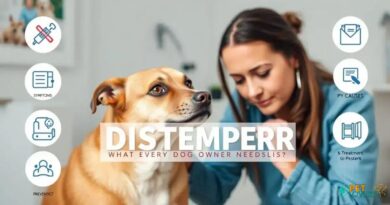What is best practices
What is Best Practices in Dog Care?
Best practices in dog care refer to the most effective and efficient methods for ensuring the health and well-being of your canine companions. These practices encompass various aspects of dog ownership, including nutrition, training, grooming, and healthcare. By adhering to these best practices, dog owners can provide a nurturing environment that promotes a happy and healthy life for their pets.
Nutrition: The Foundation of Dog Health
One of the cornerstones of best practices in dog care is proper nutrition. A balanced diet tailored to your dog’s specific needs—considering factors such as age, breed, and health status—is crucial. High-quality dog food that meets the standards set by the Association of American Feed Control Officials (AAFCO) should be prioritized. Additionally, understanding the importance of portion control and the potential risks of overfeeding can help prevent obesity and related health issues.
Regular Veterinary Check-ups
Routine veterinary visits are essential to maintaining your dog’s health. Best practices recommend annual check-ups, which include vaccinations, dental care, and screenings for common health problems. Early detection of potential issues can lead to more effective treatment and a better quality of life for your pet. Keeping up with preventive care, such as flea and tick prevention, is also a vital component of responsible dog ownership.
Training: Building a Strong Bond
Effective training is a fundamental aspect of best practices in dog care. Positive reinforcement techniques, such as treats and praise, encourage good behavior and strengthen the bond between you and your dog. Consistency in commands and training sessions is key to helping your dog understand expectations. Socialization with other dogs and people is also important, as it helps prevent behavioral issues and promotes a well-adjusted pet.
Grooming: Keeping Your Dog Clean and Healthy
Regular grooming is another critical best practice for dog owners. Depending on the breed, grooming needs may vary, but all dogs benefit from regular brushing to remove loose fur and prevent matting. Bathing your dog as needed, along with nail trimming and ear cleaning, contributes to their overall hygiene and comfort. Establishing a grooming routine can also help you monitor your dog’s skin and coat health.
Exercise: Essential for Physical and Mental Well-being
Physical activity is vital for a dog’s health and happiness. Best practices suggest providing daily exercise tailored to your dog’s energy level and breed characteristics. Activities such as walks, playtime, and interactive games not only keep your dog physically fit but also stimulate their mind. Regular exercise can help prevent behavioral problems and reduce anxiety, contributing to a well-rounded pet.
Creating a Safe Environment
Ensuring a safe living environment is a fundamental best practice for dog owners. This includes removing hazards such as toxic plants, chemicals, and small objects that could be swallowed. Providing a comfortable space for your dog to rest and relax is also important. Additionally, using proper restraints, such as leashes and harnesses, during walks can prevent accidents and keep your dog safe in public spaces.
Understanding Your Dog’s Behavior
Being attuned to your dog’s behavior is crucial for effective care. Best practices involve observing your dog’s body language and vocalizations to understand their needs and emotions. Recognizing signs of stress, fear, or discomfort allows you to address issues promptly and create a more harmonious living environment. Educating yourself about canine behavior can enhance your relationship with your pet.
Emergency Preparedness
Being prepared for emergencies is an essential aspect of responsible dog ownership. Best practices recommend having a pet first aid kit readily available and knowing basic first aid procedures for dogs. Additionally, creating a plan for natural disasters or unexpected situations ensures that your dog’s needs are met, even in challenging circumstances. Keeping important documents, such as vaccination records, easily accessible is also advisable.
Community Involvement and Resources
Engaging with your local dog community can provide valuable resources and support. Best practices include participating in dog training classes, joining dog parks, and attending community events. These interactions can enhance your knowledge and provide opportunities for socialization for both you and your dog. Utilizing online resources, such as forums and educational websites, can also help you stay informed about the latest best practices in dog care.



